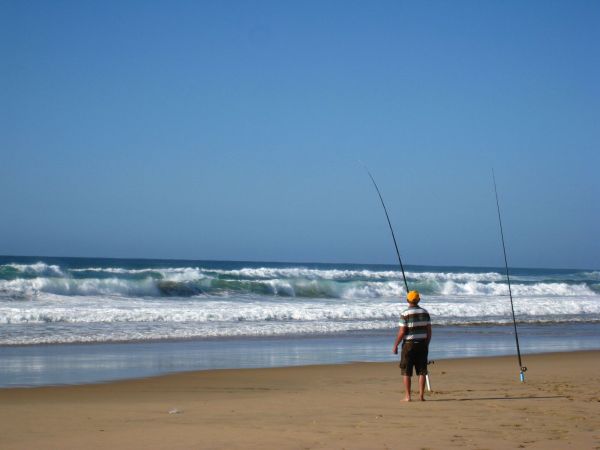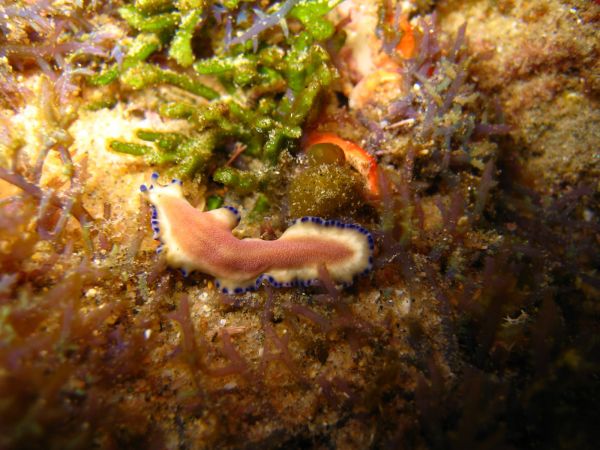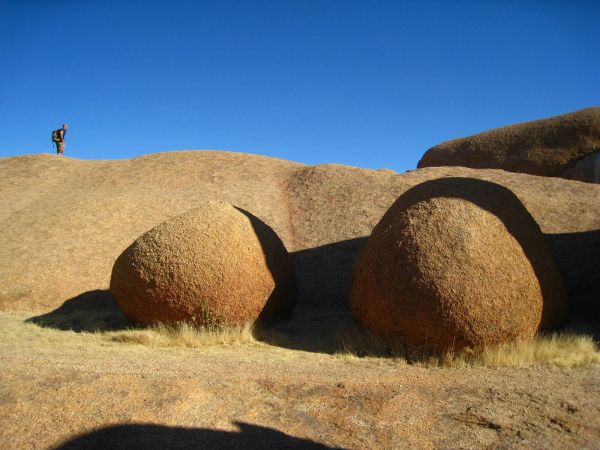How to reconcile the visual hunt of terrestrial sometimes antediluvian-looking animals with the urge of putting on a mask and a snorkel to spy on the submarine critters and all of that within the same day? South Africa possesses the answer and haven't finished to surprise us on its diversity.
We arrive in the village of St Lucia where we land up in a great guest house called Blou house backpacker. At the bottom of the garden, mongooses argue over the passion fruits the vervet monkeys have wasted.
St Lucia and the eponymous lake draw a large estuary – the largest one in Africa – propitious for wildlife. Birds and mammals live in this park, encircling the lake. The savannah vanished and trees grew up. In spite of the change of habitat, a variety of animals succeeded in adapting. Rhinoceros, kudus, leopards, zebras and wildebeests took up residence in this luxuriant land. The avowed goal of the park's managers is to recreate the former waves of animals migrations when wildebeests and the others ran away the Lebombo mountains to move towards the wetland of St Lucia.
Before getting in the park, at the end of the estuary, the owner of the guest house has promised us hippopotamuses. Better to trust local people than the paper guides, he wasn't wrong.





following this starter, we dash off to cape Vidal, 35km from the village. The owner, him again, announced this thing to us: « on the way to cape Vidal, you'll see every kind of animals including rhinos, as soon as you arrive at the end of the road, you slip mask and snorkel on to see colourful reef fish before driving back to St Lucia ». His speech sounded like the tempting caption of a tourist brochure. And yet, he was right again.
Underwater:










and a few hours later, on the earth:




St Lucia, one of the good finds of our South African journey.
Keyword - resting -
Saturday 26 July 2008
on the earth and into the water at St Lucia
By dorian on Saturday 26 July 2008, 08:19 - RTW2-South Africa
Saturday 28 June 2008
Roundnesses and steepness of the Spitzkoppe
By dorian on Saturday 28 June 2008, 18:24 - RTW2-Namibia

End of the dunes, end of the desert, end of the ocean. Change of scenery in the Spitzkoppe massif. The autochtons like to call this mountain the Swiss Matterhorn. A highlight for rock-climbers and an off the beaten track destination which combines relaxed atmosphere and rest for the others. The team that runs the campsite at the bottom of rocky bock is smiling and hospitable. The receptionist improvises a Damara-Nama course. A disconcerting language which you must take off the tongue from the palate for pronouncing a clicking sound before going on with a syllable. Not easy.
We walk away from the campsite to climb the huge round rocks stored among the golden grass. A disneyland-like arrangement of big stones. Without being unforgettable, the Spitzkoppe is however worth the trip. Harmonious roundnesses of its sides and steepness of its crest. The sunset is savoured without moderation : reddening shade of the generously curved rocks on a bed of ochre savannah.


















Tuesday 24 June 2008
Along the Skeleton Coast
By dorian on Tuesday 24 June 2008, 07:49 - RTW2-Namibia
Back to the seaside where we keep on driving northwards. From the both sides of the tropic of Capricorn virtual line the animals goes on flocking to greet our visit. The sympathetic meerkat and the superb gemsbok are like shooting stars that illuminate our route. The vegetation little by little becomes scarce. The desert have taken back its land when we arrive at Walvis Bay.



We won't stay a long time in this uninteresting town. We however stop at the dune marked number 7 to devote oneself to the joys of quadbiking. With incredible gliding and skid feelings on the dunes.


As soon as we finished the quadbiking, we head for Swakopmund, the Namibian capital city for the sand- and desert-related activities. At the entrance of the city, the carcass of an old ship – the Kolmanskop – is lying on the rocks. The foam licks the hull. A boat among the others which ran aground on this frighteningly coastline over the centuries. The regular mist, strong onshore currents, sandy shallows and false luminous signals set by the miners are the factors the sailors had to make the best with to move along the Namibian shore. The numerous ships that perished in this part of Africa coined the name of this coast which is henceforth called the Skeleton coast.



After visiting Cape Cross then the scenic flight over the Namib desert (which will be the subject of my 2 next posts), we go again for a « glide session » on the sand dunes. And this time, it will be sandboarding. Exhausting and endless climb up the dune. On foot, the board wedged on the back. At the top, we coat the board with wax, we face the slope before dashing forward for a set of falls. The Namibian sand doesn't have a very good taste...
« previous entries - page 3 of 7 - next entries »







 visits
visits